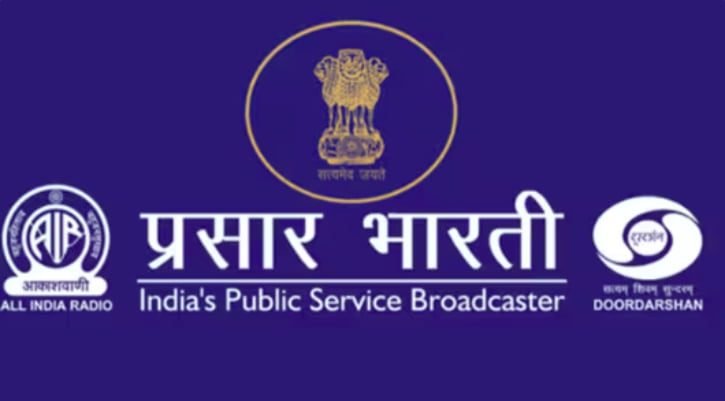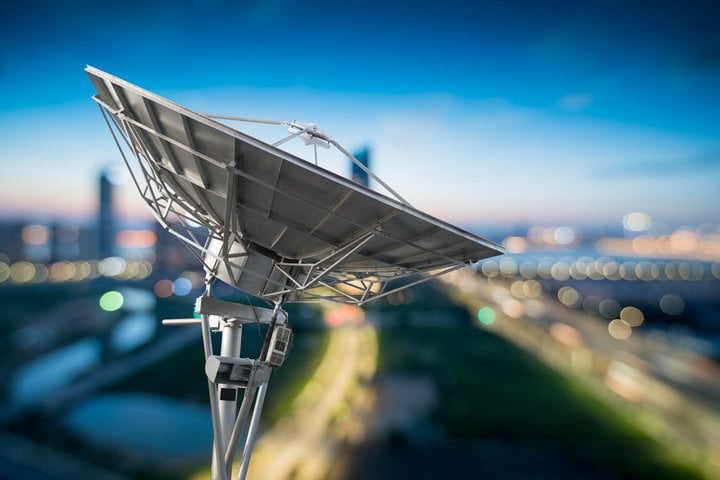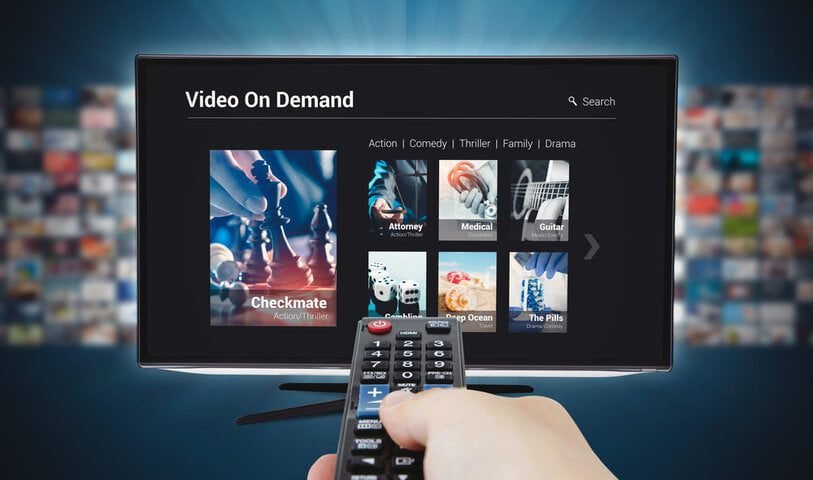Television in India has come a long way since its inception, evolving from a mere experiment into a thriving industry that plays a pivotal role in the lives of millions. It is among the most influential communication, entertainment, and education mediums today.
In This Article
Landmarks of Television in India
September 15, 1959 – Experimental Service at Delhi
The journey of television in India began on September 15, 1959, when Doordarshan was introduced as an experimental service in Delhi as part of the All India Radio services. The Indian government, initially reluctant to invest in television due to its perceived unaffordability for a developing country like India, decided to give it a chance to prove its worth in the nation’s development process.
The initial programming was modest, with broadcasts happening twice a week for just an hour daily. The content focused on community health, citizens’ duties and rights, and other socially relevant subjects. This early phase laid the foundation for television’s role as an educational and informational medium.
October 24, 1961 – School Television Started
In 1961, Indian television took a step towards education when it introduced school television programs. This initiative showcased television’s potential for imparting knowledge and reaching a wider audience.
As television began to gain popularity, Doordarshan expanded its offerings. In 1965, it introduced a five-minute news bulletin, with Pratima Puri becoming the first newsreader. This marked the beginning of television as a source of current affairs and news for the Indian audience.
January 26, 1967 – Krishi Darshan Launched (Agriculture-based Show)

In 1967, ‘Krishi Darshan,’ an agriculture-based program, was launched. This marked the beginning of specialized programming catering to the diverse interests of the Indian population. It highlighted television’s role in disseminating valuable information to rural audiences.
October 2, 1972 – Bombay Kendra Established
The establishment of the Bombay Kendra in 1972 expanded the reach of television services. It became a regional hub for producing and broadcasting content tailored to the Western region of India.
January 26, 1973 – Srinagar Kendra Began
The Srinagar Kendra, launched in 1973, brought television to the beautiful Kashmir Valley, demonstrating the government’s commitment to extending the reach of this medium to remote areas.
September 29, 1973 – Amritsar Kendra Began, and Program Production Started at Delhi
With the inauguration of the Amritsar Kendra in 1973, television services continued to expand, and program production commenced in Delhi. This marked a significant step towards enhancing the quality and diversity of content.
August 1, 1975 – SITE Launched for Socio-economic Development

One of the most remarkable milestones during this period was the launch of the Satellite Instructional Television Experiment (SITE) on August 1, 1975. SITE aimed to promote socio-economic development through intensive communication. It brought education and information to remote areas via satellite, emphasizing television’s role in nation-building. It was a significant step toward modernizing India’s communication infrastructure.
August 9, 1975 – Calcutta Kendra Started
The establishment of the Calcutta Kendra further expanded the geographical reach of television services, making them accessible to Eastern India.
August 15, 1975 – Madras Kendra Started
On India’s Independence Day in 1975, the Madras Kendra began its operations, enriching television content’s cultural and linguistic diversity in the Southern region.
November 27, 1975 – Lucknow Kendra Started
The Lucknow Kendra commenced its journey in 1975, serving Northern India and contributing to the proliferation of television nationwide.
January 1, 1976 – Commercial Services Began
A significant turning point came on January 1, 1976, when television services started generating revenue through commercial advertisements. This marked the beginning of television’s commercialization, paving the way for more significant investment in content and infrastructure.
April 1, 1976 – DD Delinked from AIR
On April 1, 1976, Doordarshan was formally delinked from All India Radio (AIR), establishing itself as an independent entity. This separation allowed television to chart its own course and cater to the specific needs of its audience.

Commercialization and Diversification
The turning point for Indian television came in 1976 with the advent of advertising on Doordarshan. This marked the commercialization of television and set the stage for its future as a mass media powerhouse. Advertisements brought revenue, leading to increased production budgets and a surge in content diversity.
Television began to offer a wide range of programming, including soap operas, situation comedies, dramas, musical programs, and quiz shows. This diversification entertained and connected with audiences on a deeper level.
1982-1995: The Era of Technological Advancements

April 10, 1982 – INSAT-1A Launched
The launch of the INSAT-1A satellite on April 10, 1982, was a game-changer for Indian television. It enhanced signal quality and expanded coverage, enabling more people to access television services.
August 15, 1982 – National Programs & Color Transmission Began
On August 15, 1982, India celebrated its Independence Day with the commencement of national programs and color transmission. This technological advancement brought vibrancy to television content, making it more engaging for viewers.
November 19, 1982 – TV Coverage of the Asian Games
In 1982, Indian television achieved another milestone by providing extensive coverage of the Asian Games. This event showcased television’s potential to bring major sporting events into the homes of millions.
July 15, 1984 – India’s First Sponsored Serial HumLog Began
The launch of “HumLog” on July 15, 1984, marked a significant development in Indian television. It was India’s first sponsored serial, demonstrating the potential for corporate partnerships in television production.
August 15, 1984 – UGC Started Showing the Country Classroom Program
The University Grants Commission (UGC) initiated the Country Classroom Program on August 15, 1984, using television to deliver educational content to students nationwide.
February 23, 1987 – Morning Transmission of DD Started
The introduction of morning transmissions on February 23, 1987, expanded the daily broadcast schedule, offering viewers a more comprehensive range of programming throughout the day.
October 15, 1987 – Weekly News Bulletin for the Hearing Impaired
Indian television demonstrated inclusivity by launching a weekly news bulletin for the hearing impaired on October 15, 1987, emphasizing its commitment to serving diverse audiences.
February 6, 1989 – CPC (Central Production Centre) in New Delhi
The establishment of the Central Production Centre (CPC) in New Delhi on February 6, 1989, strengthened the production capabilities of Doordarshan, leading to the creation of high-quality content.
1991-1995: The Dawn of Satellite Television

In 1991, India witnessed another game-changing moment when the first international satellite television channel, CNN, debuted in the country during its coverage of the Gulf War. This event exposed viewers of television Journalism in India to global perspectives, widening their horizons.
Around the same time, Hong Kong-based Star TV started broadcasting five channels in India via the ASIASAT-1 satellite. These developments marked the beginning of satellite-based television services in India. Subsequently, several Indian channels like Zee TV and Sony TV were launched between 1991 and 1994, further enriching the television landscape.
May 20, 1991 – IGNOU Started an Educational Program
In 1991, the Indira Gandhi National Open University (IGNOU) initiated an educational program on television, expanding the role of television in distance education.
December 5, 1991 – Recorded Version of Question Hour in Parliament
On December 5, 1991, television brought the proceedings of the Indian Parliament closer to the public by broadcasting a recorded version of the question hour.
December 7, 1994 – Live Telecast of Question Hour in Parliament
A significant leap was taken on December 7, 1994, with the live telecast of the question hour in Parliament, increasing transparency and public engagement in the political process.
1995-2000: The Transition to Digital Era

March 14, 1995 – DD India International Channel
DD India International channel was launched, marking India’s foray into international broadcasting. This channel aimed to showcase Indian culture, art, and news to the global audience, fostering cultural exchange.
April 7, 1995 – DD Movie Club
DD Movie Club was introduced, providing movie enthusiasts with a dedicated platform to enjoy a diverse range of films, including classic Indian cinema.
June 30, 1995 – DD-CNN 1, Current Affairs Channel
DD-CNN 1, a collaboration with CNN, was launched as a current affairs channel. It brought global news to Indian viewers, enhancing the international perspective in Indian news broadcasting.
2000-2010: The Rise of Cable and Satellite TV
2003: The TRAI (Telecom Regulatory Authority of India) introduced the Conditional Access System (CAS), making cable TV services more transparent and enabling viewers to select and pay only for the channels they wanted to watch.
2006: Direct-to-Home (DTH) services, including Tata Sky, Dish TV, and others, gained prominence, offering subscribers access to various channels and interactive features.
2008: The advent of high-definition (HD) channels revolutionized television viewing by providing superior picture and sound quality.
2010-2020: The OTT Revolution

2012: The emergence of Netflix in India marked the beginning of the Over-The-Top (OTT) revolution. It allowed viewers to stream a vast library of movies, series, and documentaries on demand.
2015: Amazon Prime Video entered the Indian market, further intensifying competition among OTT platforms and leading to the production of original Indian content.
2016: Reliance Jio’s launch revolutionized India’s internet landscape by offering high-speed data at affordable rates, leading to increased online video consumption.
2017: Hotstar (now Disney+ Hotstar) expanded its content library, offering live sports, Indian and international shows, and movies. The platform gained massive popularity, especially during cricket tournaments.
2019: India witnessed the release of Sacred Games on Netflix, a crime thriller series that garnered international attention and set a high standard for Indian original content.
2020-Present: The Streaming Wars and Content Diversity
2020: The year marked the entry of Disney+ Hotstar into the streaming wars with a vast array of Disney, Marvel, Star Wars, and Indian content.
2021: SonyLIV and Voot continued to grow their content libraries and subscriber bases, competing with established players in the OTT market.
2022: The ongoing streaming wars led to a surge in Indian original content production, spanning genres like crime, drama, comedy, and historical epics.
Present: The streaming landscape in India remains highly competitive, with several OTT platforms catering to diverse tastes. Viewers now have access to many Indian and international content, from regional shows to global blockbusters.
The journey of television in India, from 1995 to the present, is a story of constant evolution and adaptation. From the introduction of international channels to the digitalization of cable TV and the rise of OTT platforms, television in India has continually transformed to meet the demands and preferences of its diverse audience.
As we stand at the cusp of an even more digital and interconnected future, Indian television continues to be a dynamic and influential force, shaping how people consume content and stay informed. The industry’s resilience and ability to innovate guarantee that television in India will remain an integral part of the country’s cultural and social fabric for years to come.


